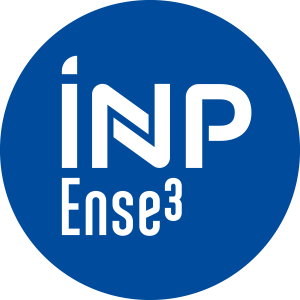Number of hours
- Lectures 32.0
- Projects -
- Tutorials -
- Internship -
- Laboratory works 17.5
ECTS
ECTS 5.0
Goal(s)
The courses are based on theoretical, experimental and numerical approaches to training engineering students to treat industrial key concepts of hydraulic machinery including turbines and hydraulic storage issues. The problems related to the coupling betwwen turbines and grid will also be presented. The participation of industrial partners will give a pragmatic view of the methods used, as well as will present the issues and the challenges.
Stefan HOERNER
Content(s)
INTRODUCTION
Hydraulic Machinery: definition, functions, challenges
Course objectives
Pre requisites
Part 1: HYDROELECTRICITY
CHAPTER I: HYDROPOWER IN THE GLOBAL ENERGETIC SCENARIO
I.1. Energetic balance: consumption in the World and in Europe; production cost of electricity
I.2. Hydroelectricity: some orders of magnitude
I.3. Hydroelectricity in France
I.4. Growth forecast
I.5. Benefits of Hydropower
I.6. Markets
I.7. Key actors
I.8. Issues and technical challenges
I.9. Uncertainties
CHAPTER II: HYDROELECTRIC DEVELOPMENTS
II.1. Classifications
II.2. Types of developments
II.3. Accumulation capacity
II.4. Power plant equipments
II.5. Civil engineering works
II.6. Electric and mechanical equipment
CHAPTER III: SMALL HYDROELECTRICITY
III.1. Introduction
III.2. Pump as Turbine PAT
III.3. Turbine selection
III.3.a Gross and net head as a function of the flow rate
III.3.b Turbines efficiency curves
III.3.c Turbine-generator group rotation speed
III.3.d Turbine implantation
III.3.e Way to follow for preliminary selection
III.4. Case study
Part 2: TURBOMACHINERIES
CHAPTER I: THEORY OF TURBOMACHINERIES
Energy exchanges in a turbomachinery:
Flow around an isolated profile
Analogy between profiles and blades
Some examples of physical analysis
Velocity polygon
Euler's formula:
Application in the pump direction
Application to the entire runner
Energy interpretation of Euler's relation
Bernoulli in rotating frame: Rothalpy
Application on pump direction:
Relation head-discharge
Power, efficiency and losses
Power balance in a pump runner
Application on turbine direction:
Example of velocity triangle in a turbine (Francis or Kaplan)
Relation head-discharge: H x Q theoretical curve
Runaway speed
Power balances in a turbine runner
Efficiency hill
Reminders: Machine characteristic
Machines grouping (series / parallel)
CHAPTER II: SIMILARITY LAWS IN TURBOMACHINERIES
Similitude theory
Similitude in turbomachineries:
Geometric similarity
Kinematic similarity
Dynamic similarity and general laws (based on Euler's relation)
Dimensionless parameters:
Coefficient of discharge
Specific energy coefficient
Reduced variables
Specific speed and diameter
Impeller geometry as a function of specific speed
Scale effects and " Step up " equations
Standard conditions
Scaling of the fluid
Similitude about cavitation phenomenon (see Chapter V)
CHAPTER III: IMPULSE TURBINES
Little History
Pelton Turbines (high water head):
General description
Operation principle
Jet velocity evaluation in a Pelton turbine
Power and efficiency hill
Specific Speed Rotation:
Increase of the Pelton turbines power
Discharge regulation
Constraints and fatigue of Pelton turbines
Wear/repairs of Pelton turbines
Banki-Mitchell Turbines (or Crossflow turbines) (small hydroelectric plants)
Turgo Turbines (small hydroelectric plants)
CHAPTER IV: REACTION TURBINES
Little History
Francis Turbines:
Different parts
Flow in spiral casings
Guide vanes and stay vanes
Security systems
The impeller
Mechanical conception
Overall disposition
Production technology
The draft tube
Turbines Francis operating:
Compressed air station
Load variations
Runaway speed
Kaplan and Propeller Turbines:
Description
Mechanical production:
Distributor
Rotating parts
Draft tube
Working as an unloader
Blades mechanism
Bulb Turbines:
Description
Mechanical design:
Stay guide vanes
Conical distributor
Other Turbine Geometries
Characteristic Curves, Efficiency Hills
Specific Speed of Different Turbines
Turbine/Alternator Coupling
CHAPTER V: CAVITATION
The phenomenon
Cavitation erosion
Erosion and materials
Cavitation and flow
Vortex rope
Cavitation in blade suction side
Cavitation in blade pressure side
Cavitation due to turbulence
Unsteady and instable phenomena
Some problems and solutions
Net Positive Suction Head
CHAPTER VI: FLOWS IN TURBOMACHINERIES
Introduction
Stability Criteria
Steady and unsteady flows:
Unsteadiness related to the operating point: surge, rotating stall, floating,cavitation
Periodical Unsteadiness: Rotor-Stator Interaction
Flow structures:
Axial machines
Radial and mixed flow machines
Resonance Problems:
Origin
Examples
Protection and control
CHAPTER VII: HYDROELECTRIC STORAGE
1. Introduction
2. Current balance
3. PSP in France
4. Pump-turbines
5. Characteristic curves of pump-turbines
6. Scientific and technological challenges
7. Variable speed
8. Conclusions
courses 2A:
Turbulence
Fluid mechanics
Hydraulic of pressurized ducts
- Specific credits: this course brings 6.0 ECTS to students in Year 2 Master Fluid Mechanics and Energetics (M2 FME)
Session 1
Continuous assessment (CC1) : lab work and hands-on training reports and presentation of articles
Final exam (ET1) : 3h written exam
Session 2
The new mark ET2 will replace the first one (ET1). No retake for CC1.
ER 60% + EN 40%
The exam is given in english only 
The course exists in the following branches:
- Curriculum - M2 FME Research - Semester 9 (this course is given in english only
 )
) - Curriculum - Master's Degree in Engineering ME - Semester 9 (this course is given in english only
 )
)
Course ID : 5EUS5MHH
Course language(s): 
You can find this course among all other courses.
[1] Handout « Machines Hydrauliques », ENSE3, G INP by JL KUENY
[2] « Aménagements Hydroélectriques », Techniques de l’Ingénieur, traité Génie mécanique, B4405 by André L. JAUMOTTE and Pierre DECOCK
[3] « Petites centrales hydrauliques », Techniques de l’Ingénieur, traité Génie électrique BM 4 166, S. PERRIN
[4] « Turbines Hydrauliques », Techniques de l’Ingénieur, traité Génie mécanique, B4407 , A. JAUMOTTE and al.
[5] « L’énergie hydraulique », by R. GINOCCHIO, Eyrolles 1978
[6] « Hydraulique des écoulements en charge », Course 2A, R. Fortes Patella.
[7] « Les coups de bélier et la protection des réseaux d’eau sous pression », M. MEUNIER, ENGREF, 1980
[8] « Fluid transients, C. JAEGER », Blackie & Son, 1977
[9] « Mémento des Pertes de Charge », I.E. IDEL’CIK, Ed. Eyrolles, 1960
[10] « Petites centrales hydrauliques : Turbines hydrauliques », Programme d'action PACER – Energies renouvelables, Office fédéral des questions conjoncturelles, ISBN 3-905232-54-5, 1995.
[11] « Turbines hydrauliques : fonctionnement », Techniques de l’Ingénieur, traité Génie mécanique, BM 4406 by Louis Raphaël EREMEEF.
Boussuges P. "Cours de Machines Hydrauliques", Polycopié ENSHMG
Brun R., Zulzi de Zouza, « Maquinas de Fluxo », Ao livro technico S/A Rio de Janeiro, 1969
Ouziaux R. et Perrier J. "Mécanique des Fluides appliquée", tome 1 et 2, Dunod, 1972
Stépanoff A. J., "Pompes Centrifuges et Pompes Hélices", Dunod, 1961
Raabe J.,"Hydraulishe Maschinen un Anlagen", VDI Verlag Gmbh, 1989
Raabe J., "Hydro-Power", VDI Verlag Gmbh, 1985
Schulhof, "Les stations de pompage de l'eau", Lavoisier -Tec & Doc 1991
Turton R.K., "Principles of Turbomachinery", E. & F.N. Spon Ltd, 1984
French State controlled diploma conferring a Master's degree




